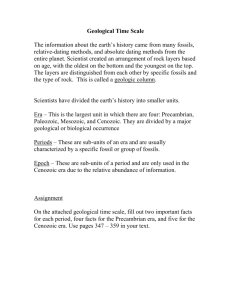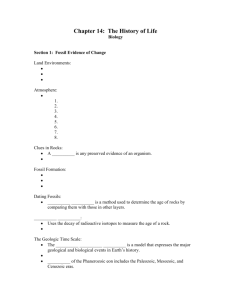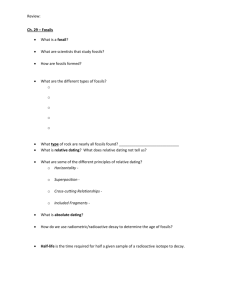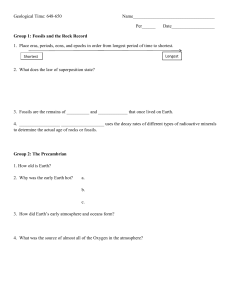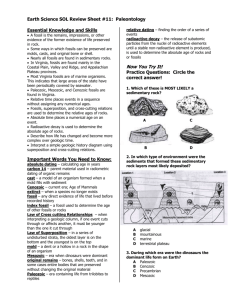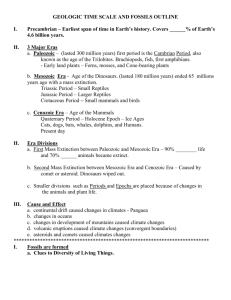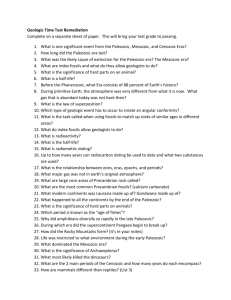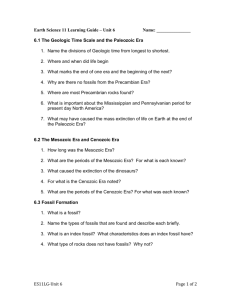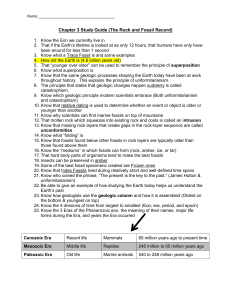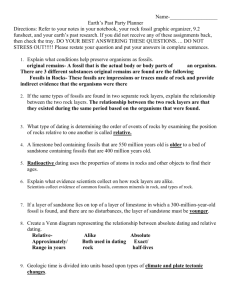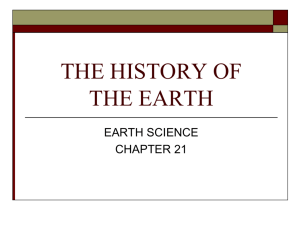C7 Fossils and Geologic Time REVIEW packet
advertisement
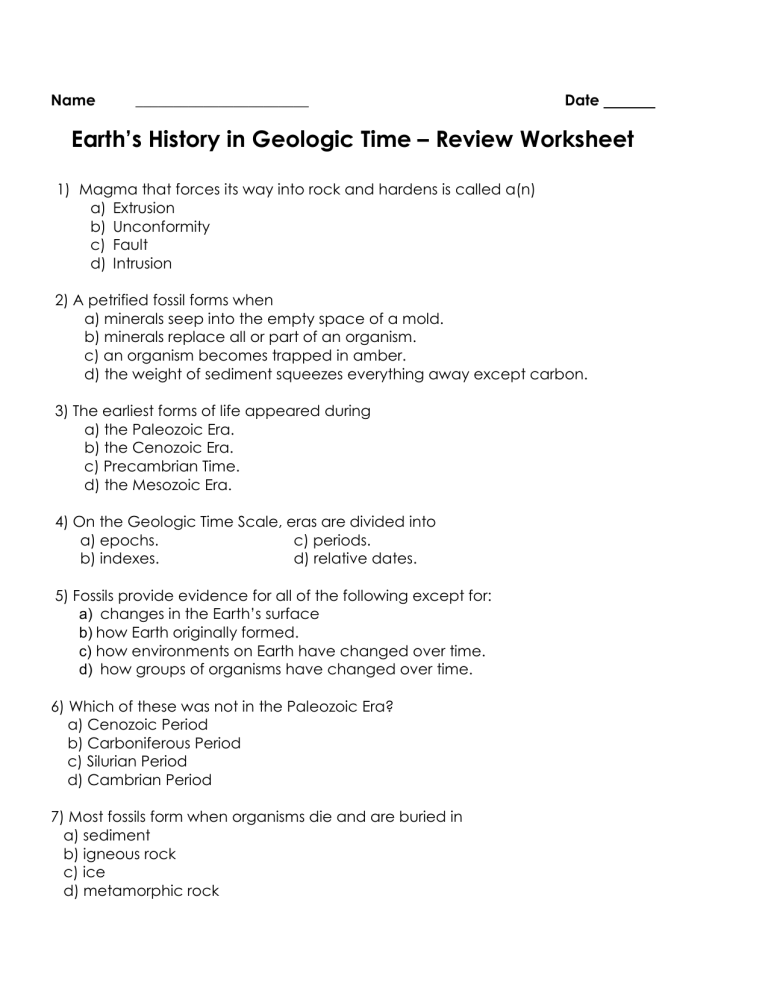
Name _______________________ Date Earth’s History in Geologic Time – Review Worksheet 1) Magma that forces its way into rock and hardens is called a(n) a) Extrusion b) Unconformity c) Fault d) Intrusion 2) A petrified fossil forms when a) minerals seep into the empty space of a mold. b) minerals replace all or part of an organism. c) an organism becomes trapped in amber. d) the weight of sediment squeezes everything away except carbon. 3) The earliest forms of life appeared during a) the Paleozoic Era. b) the Cenozoic Era. c) Precambrian Time. d) the Mesozoic Era. 4) On the Geologic Time Scale, eras are divided into a) epochs. c) periods. b) indexes. d) relative dates. 5) Fossils provide evidence for all of the following except for: a) changes in the Earth’s surface b) how Earth originally formed. c) how environments on Earth have changed over time. d) how groups of organisms have changed over time. 6) Which of these was not in the Paleozoic Era? a) Cenozoic Period b) Carboniferous Period c) Silurian Period d) Cambrian Period 7) Most fossils form when organisms die and are buried in a) sediment b) igneous rock c) ice d) metamorphic rock 8) The Mesozoic Era is often called the a) Age of Mammals b) Age of Fish c) Age of Reptiles d) Age of Amphibians 9) Scientists use radioactive dating to a) determine the absolute ages of rocks. b) discover the source of index fossils. c) determine the relative ages of extrusions. d) find trace fossils in igneous rock. FILL IN THE LINE TO CORRECTLY COMPLETE EACH STATEMENT. 10) A scientist who studies fossils is called a(n) _______________. 11) The process by which all living things have changed over long periods of time is called _____________. 12) The ____________ of a radioactive element is the time it takes for half of the radioactive atoms to decay. 13) The __________ _______ is the age of a rock compared to the ages of other rocks. 14) Plants and animals first reached land during the _____________Era. 15) An animal with a backbone is called a(n)_____________. 16) According to the law of superposition, the_________ layer is at the bottom. Each higher layer is_________ than the layers below it. 17) The ________ _____ is the number of years since the rock has formed. 18) Fossils that are of organisms that were found in many places around the world but only during one specific time period are called __________________. 19) ___________________ is a radioactive element that decays into ________________ and is good for dating bones, teeth, wood and other living things. 20) ____________________ and __________________ are two elements that decay and are good for dating rocks and things that are millions or billions of years old. Put the events in order ____ youngest ____ ____ ____ ____ oldest 20) Create the chart that was on the board – fill in the missing blanks ________________ Period ___________________________ ________________ Era Neogene Period – large mammals and birds ________________ Period ___________________________ -----------------------------------------------------------------------------------------------------------------------________________ Period ___________________________ ________________ Era ________________ Period large dinosaurs/reptiles Triassic Period ___________________________ -----------------------------------------------------------------------------------------------------------------------________________ Period - mass extinction ________________ Period ___________________________ ________________ Period ___________________________ _______________ Era Silurian Period ___________________________ ________________ Period ___________________________ ________________ Period first invertebrates -----------------------------------------------------------------------------------------------------------------------____________________ Time Single celled organisms (bacteria)
